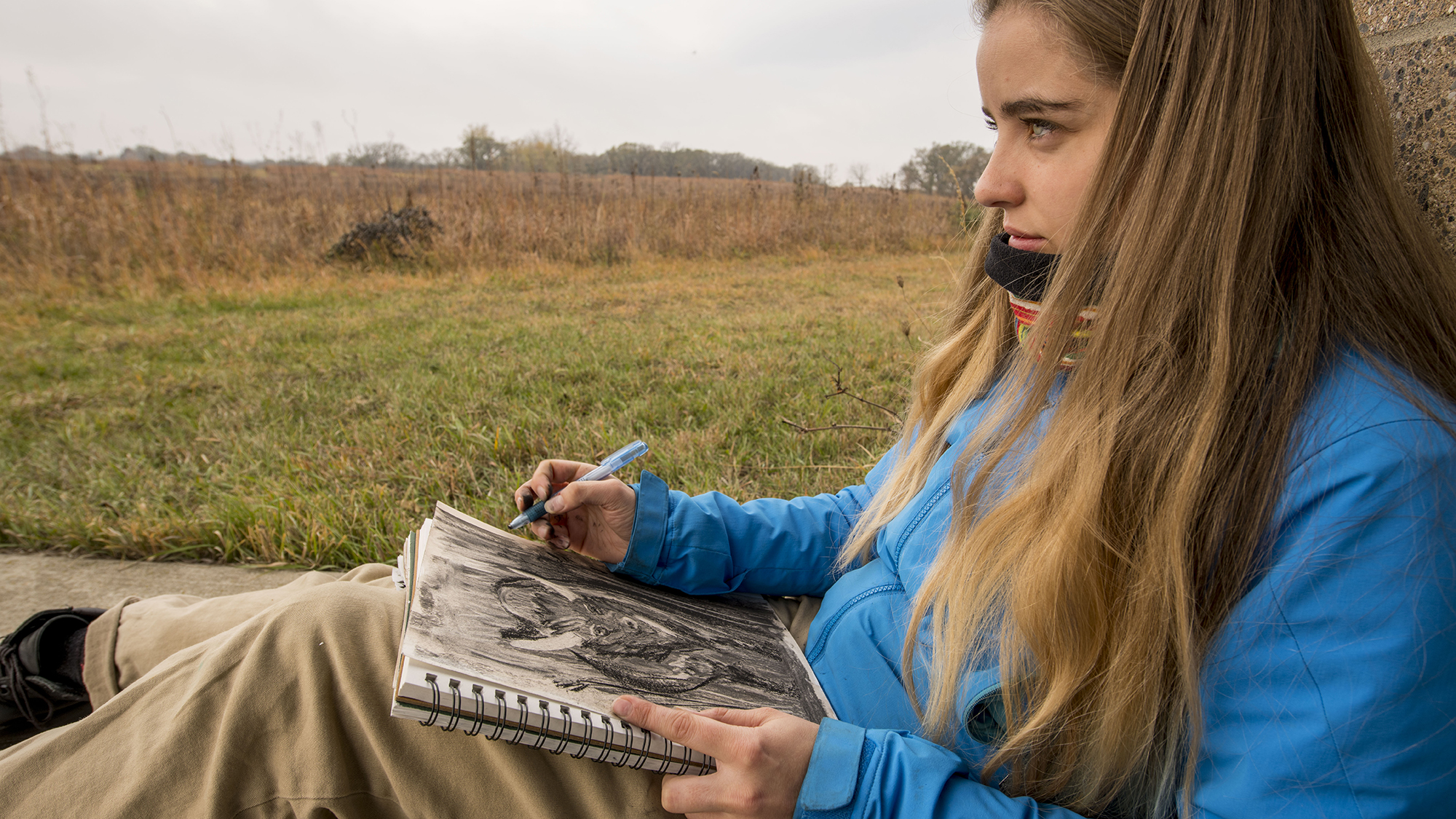Defining the Humanities
Elfenbein: It’s the study of how people make sense of their lives, but importantly, what it is that they produce to communicate, and how they communicate what it is they’re thinking about and experiencing.
Running: I think about the humanities from two different places. One is a place of making. … I’m really interested in humanistic activity that happens in process, and is a way to process, a way to build understanding of something.
I’m also interested in art’s ability to generate empathy. … Through works of fiction, through works of music, and through works of art, we can often access the experience of others and can put ourselves in that space.
Cummins: When I think of the humanities, I go back to the Latin word humanitas and what it meant to the ancient Romans. It could mean human nature, it could mean just being human; but it also could mean the qualities of being human. Then, humanitas would mean the kind of education that’s appropriate for a human.
My reason for bringing this up is because I think it gets to the point that [Lee is] making, that the Romans thought it should induce a kind of empathy. Why? Because to be human is to be born, to live, and to die. And humanities is what we do to make sense of the interval in between, in large part.
Simpson: I love what’s developing, the combination of empathy and making and analytic skill. … What I’m thinking about more and more in my teaching and my scholarship are the ways in which the humanities are especially suited to combining those functions, so that we’re making and critiquing simultaneously.
Cummins: What the humanities are trying to spark is observation, the thought that comes, whether it’s drawing with your hands, observing, or whether it’s absorbing a text and being thoughtful and careful and finding something to say about it, even if it’s something ambiguous — embracing the ambiguity because life is ambiguous.
Simpson: Those skills of assimilating a complex body of text and producing something clear and persuasive from it, and recording the process by which you got to it — all of that is valuable in itself, and valuable to employers. You can go down that road, and I very much think that’s true. But there’s also a great satisfaction in understanding the technique of someone who is really good at doing what they do. Essays can be beautifully done, too.
I think that students find it deeply satisfying to be able to understand that process, which is so opaque at the beginning.
Feng: So I was thinking, as I listened to you, maybe the first step is to teach students, or guide them to the ways, of how we see things. Maybe it’s drawing, it’s artwork, or maybe it’s writing, it’s literature. And then they can try to do something like that as a first step, right?

